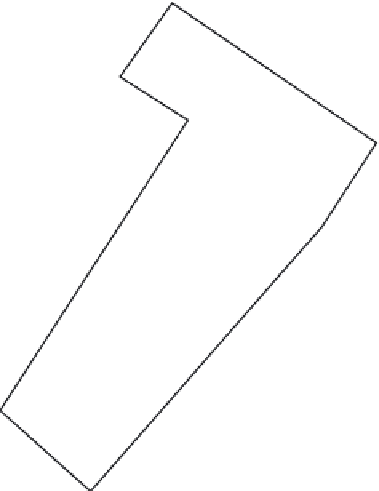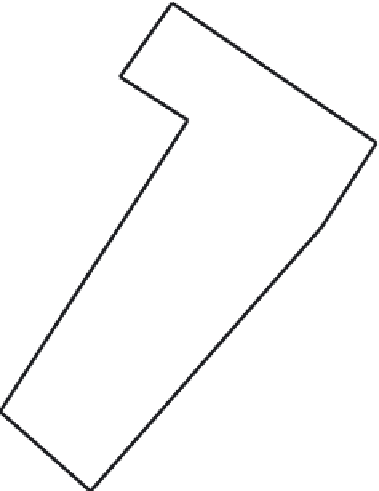Environmental Engineering Reference
In-Depth Information
Information obtained from facility
engineering layout diagram dated
1920
N
Adjacent
facility
Site property
boundary
Raw material
storage (outdoors)
Machine shop
Waste storage area
(outdoors)
Oil storage shed
Adjacent facility
30 m
0
FIGURE 14.3
Historical map of site from 1920.
The areas under and immediately adjacent to the site have not been mapped at all, and
the areas mapped do not provide information on the stratigraphy or identify appropriate
geological units. This lack of a basic geologic map increases the difficulty of environmen-
tal investigations. As we noted in Chapter 2, urban geology is often not considered as
appealing as the national parks, but is complex and fundamental to understanding the
physical context for contamination events. Without this foundation, a proper assessment
of vulnerability cannot be made, leading to poor decisions resulting in the location of
facilities posing risks to the subsurface and surface environments in highly vulnerable
areas—as is the case here.
For decades, this site has been located in a geologically vulnerable area with signifi-
cant historical use of chemical compounds and a high groundwater contaminant risk
factor. This combination resulted in a large contaminant plume affecting a potable aqui-
fer, rendering its water off limits to not only the affected area—but to the general region.
Unfortunately, this event is not an isolated occurrence at this location. Several contami-
nant plumes were identified from multiple sources during investigative activities, and as
depicted in Figure 14.5, they are migrating toward a surface water body. As we know from
Chapter 3, this phenomenon commonly occurs and, if not addressed, could eventually
contribute to the deterioration of surface water quality. Figure 14.6 shows a planimetric
(overhead) view of the DNAPL VOC contaminant plumes.
Aquifers are 3D in nature and represent a stack of related structural units. Understanding
their vertical structure and the relationships between the units are critical to managing the
resource. New mapping techniques have been developed at much higher resolutions with
the ability to manipulate horizontal and vertical exaggeration. These capabilities enable


























Search WWH ::

Custom Search